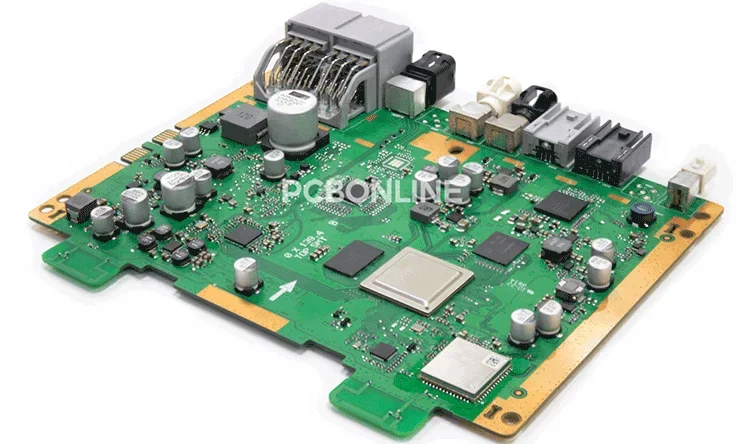
Printed circuit boards (PCBs) are the backbone of modern electronics, from smartphones to spacecraft. On the circuit board, there are numerous small parts and intricate pathways. All engineers should understand the circuit board components to work seamlessly and bring your devices to life.
This blog breaks down the PCB electronic components into two main categories: passive and active components. Understand their functionality and how they interact with each other easily.
In this article:
Part 1. Understanding Circuit Board Components Part 2. PCB Passive Components Overview Part 3. PCB Active Components Overview Part 4. One-stop PCB Component Assembly from PCBONLINEUnderstanding Circuit Board Components
A PCB is essentially a stage that links electronic components together through conductive pathways. These pathways enable electricity to flow from one component to another, thus allowing the device to function. The circuit board components are mounted on the PCB with SMT and PTH assembly. They can be categorized into two prominent groups:
Passive components: These are also called internal components. Passive components do not produce any energy but they are without a doubt crucial when it comes to determining how electricity flows through the circuit.
Active components: These are the ones who call the shots. Active components need an external supply of electricity for them to operate, and they can amplify, switch, or alter electrical signals somehow.
The common passive and active components are listed in two tables below.
Table of passive components
|
PCB part
|
Symbol
|
Function/description
|
Example image
|
|
Resistor
|
 |
Limits the flow of electric current.
|
 |
|
Capacitor
|
 |
Stores and releases electrical energy.
|
 |
|
Inductor
|
 |
Stores energy in a magnetic field when current flows through it.
|
 |
|
Transformer
|
 |
Transfers electrical energy between circuits through electromagnetic induction.
|
 |
Table of Active Components
|
PCB part
|
Symbol
|
Function/description
|
Example image
|
|
Transistor
|
 |
Amplifies or switches electronic signals.
|
 |
|
Integrated circuit (IC)
|
 |
A complex circuit with multiple components in a single package.
|
 |
|
LED
|
 |
Emits light when current flows through it.
|
 |
|
Photodiode
|
 |
Converts light into electrical current.
|
 |
|
Diode
|
 |
Allows current to flow in one direction only.
|
 |
PCB Passive Components Overview
Below, you can learn about the passive components on a circuit board one by one.
Resistors
Resistors interrupt the electric signal flow in the circuit. To illustrate a resistor, let us assume you have worked with an LED before. If you did not include a resistor, the LED would experience excessive current and reach its demise immediately. This is where a resistor saves the LED from burning out.
They are classification, being fixed, variable, such as potentiometers, specialized grade for high power applications, and much more. Most common in electronics are fixed resistors, which can be found in nearly every circuit.
![]()
Capacitors
Capacitors are another fundamental passive component used in power supplies. In a circuit, capacitors are energy storage devices since they can store energy within an electric field. Electrons are released back when additional energy is needed, therefore, allowing capacitors to charge and discharge. This way, a capacitor acts like a rechargeable battery.
Regarding naming the capacitor, they fall under electrolytic, ceramic, and tantalum capacitors, each with specific attributes that suit particular functions. Capacitors are used for buffering voltage swings in power electronics and filtering mixes in audio devices among many other applications.
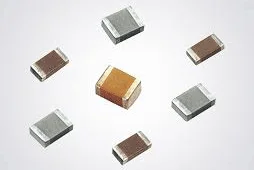
Inductors
Electrical components come in various forms, from simple to complex. Inductors, along with capacitors and resistors, are among the most basic PCB components. However, unlike capacitors and resistors, inductors can store energy in a magnetic field when electric currents pass through them. This ability is important in circuits designed for energy storage and filtering nodes, such as power supply systems and RF applications.
![]()
Transformers
Transformers are the PCB components for the modification of voltage levels to the desired values within a circuit. They function based on the principle of electromagnetic induction by transferring electrical energy between two or more circuits without direct physical coupling between the circuits.
Often, you may come across this inductive device in electricity transformers. They are found in power supplies where they directly step down a wall socket's high-voltage AC to a lower level that is much more friendly for electronics. Inductive audio devices employ them to modify the impedance of different components to more suitable levels.
PCB Active Components Overview
While passive components control and manage the electricity, an active PCB component is the one to do the work when the time calls for it. Hence, active parts are the most crucial components.
Active components can amplify, switch, or modify electrical signals. However, power has to be supplied from an external unit. Let's check out the most frequently used active components.
Transistors
One of the most important active components is the transistor. It can amplify weak signals or work like a switch, turning currents on and off.
Transistors come in two basic forms: bipolar junction transistors (BJT) and field-effect transistors (FET). Each has its advantages and disadvantages and is used in various circuits from audio amplifiers to microprocessors.
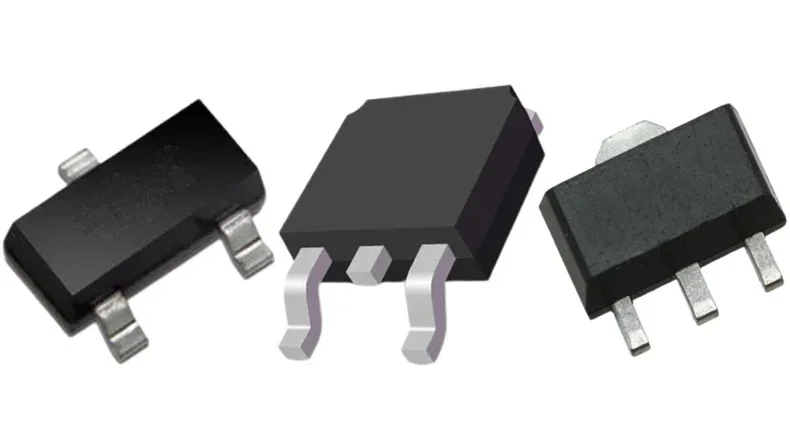
Integrated Circuits (IC)
Integrated circuits (ICs) are similar to single-chip structures that can host entire circuits. Hundreds or thousands of transistors, resistors, capacitors, and other components can be integrated on a chip to perform complex tasks.
Electronic devices have the ICs as their brains. For example, your computer's processor is yet another example of an IC, however, it performs billions of calculations in just one second. Other common ICs are memory chips, voltage regulators, and even microcontrollers.
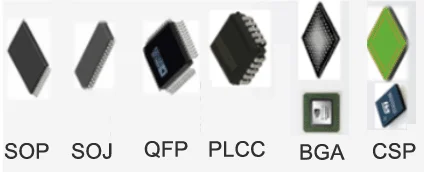
LEDs
Light-emitting diodes (LED) are used for indicator lamps, large displays, home and industrial lighting, etc. They consume much less power and last far longer than incandescent bulbs. They emit light when an electric current passes through them. The color of the light depends on the material used in the LED. For example, red LEDs use gallium arsenide, while blue LEDs use gallium nitride.
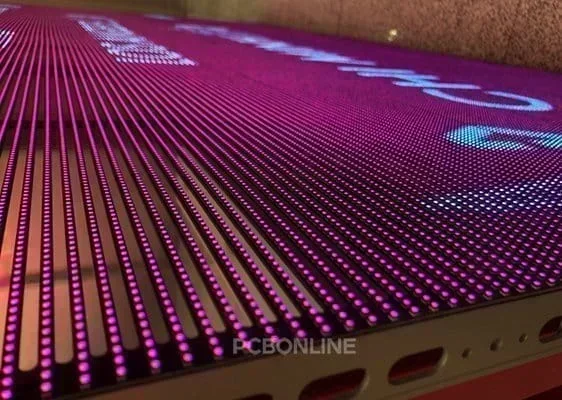
Photodiodes
Unlike light-emitting diodes, photodiodes do not emit light but convert light into an electrical current. This ability makes them useful in applications such as light sensors, solar cells, and optical communication systems.
For example, the sensor in your smartphone's camera is a grid of photodiodes that turns light into electrical signals, and the circuit processes those signals to produce an image.
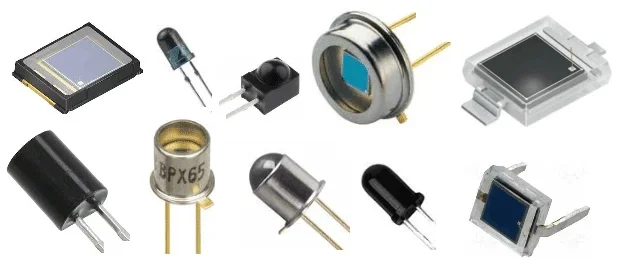
Diodes
A diode is the simplest form of electronic component, yet it serves numerous important functions. It can only allow the flow of electric current in a specific direction, greatly enhancing its utilization for changing alternating current (AC) to direct current (DC) power.
Diodes can be used in power supply units for changing the voltage AC from a wall socket into DC that electronic gadgets require.
Diodes are also applied in circuits to prevent damage caused by reverse polarity, the act of switching a battery or a power supply back to front.
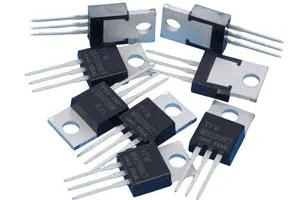
One-stop PCB Component Assembly from PCBONLINE
If you need circuit board components for PCB assembly, work with the one-stop PCBA manufacturer PCBONLINE for EMS PCB assembly services, including circuit board components, R&D, prototyping, PCB manufacturing, PCB assembly, and comprehensive testing and value-added services until the final devices are finished and tested.
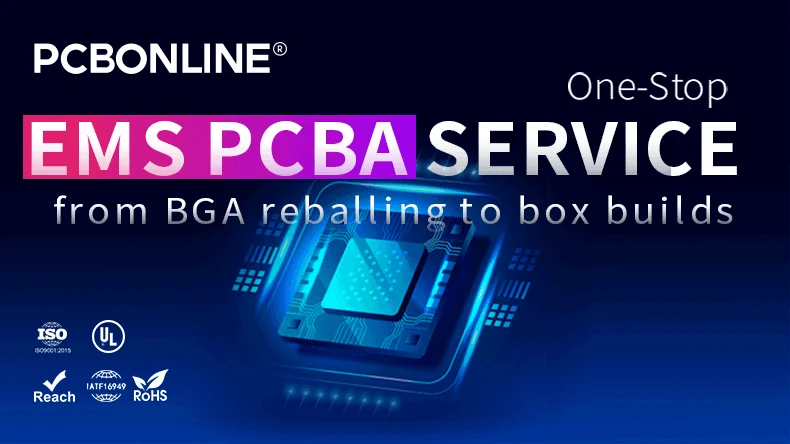
Founded in 1999, PCBONLINE has two large advanced PCB manufacturing bases, one PCB assembly factory, stable supply chains, and an R&D team.
PCBONLINE provides turnkey PCB component assembly services, including R&D, prototyping, PCB manufacturing, component sourcing, PCB assembly, PCBA functional testing, thermal aging, IC programming, enclosures, and box-build assembly.
PCBONLINE offers free one-on-one engineering support and DFM, ensuring the smooth PCB component assembly process and successful results of the PCBAs and end-devices.
PCBONLINE can source all passive and active circuit board components, and it has a component warehouse with 100,000+ types and models of components.
High-quality PCB component assembly certified with ISO 9001:2015, ISO 14001:2015, IATF 16949:2016, RoHS, REACH, UL, and IPC-A-600 Class 2/3.
When your PCBA project enters the bulky production stage, PCBONLINE refunds the fees of R&D, prototyping/sampling, including the components, and PCBA functional testing.
Besides embedded-component PCBs, PCB can embed the copper busbars and ceramic PCB inlays in the PCB. To get a quote, please contact info@pcbonline.com.
Conclusion
Circuit boards bring together so many components - passive and active - they work remarkably in unison as a whole. Passive components such as electric resistors, capacitors, inductors, transformers, and active components such as transistors, integrated circuits, LEDs, photodiodes, and diodes all have one thing in common: they receive and control energy signals, but also transform them or use them for other underlying processes.
To ensure the success of your PCBA and box-building projects, work with the EMS PCBA manufacturer PCBONLINE.
PCB assembly at PCBONLINE.pdf




